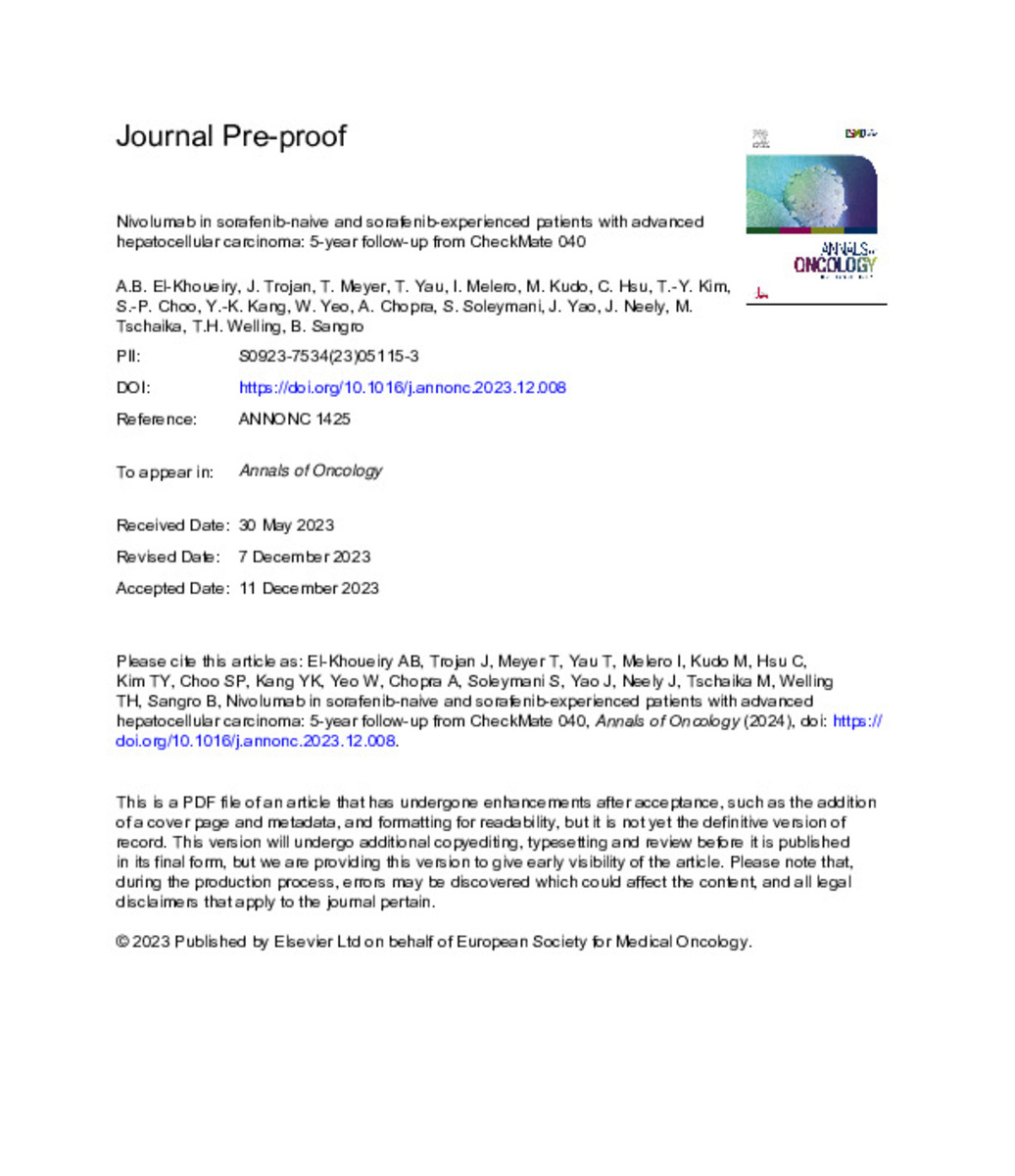Nivolumab in sorafenib-naive and sorafenib-experienced patients with advanced hepatocellular carcinoma: 5-year follow-up from CheckMate 040
Keywords:
Advanced hepatocellular carcinoma
Checkpoint inhibitor
Nivolumab
Sorafenib
Citation:
El-Khoueiry, A. (Anthony); Trojan, J. (Jörg); Meyer, T. (Tim); et al. "Nivolumab in sorafenib-naive and sorafenib-experienced patients with advanced hepatocellular carcinoma: 5-year follow-up from CheckMate 040". Annals of Oncology. S0923-7534 (23), 2023, 05115-3
Statistics and impact
0 citas en

0 citas en

Items in Dadun are protected by copyright, with all rights reserved, unless otherwise indicated.








